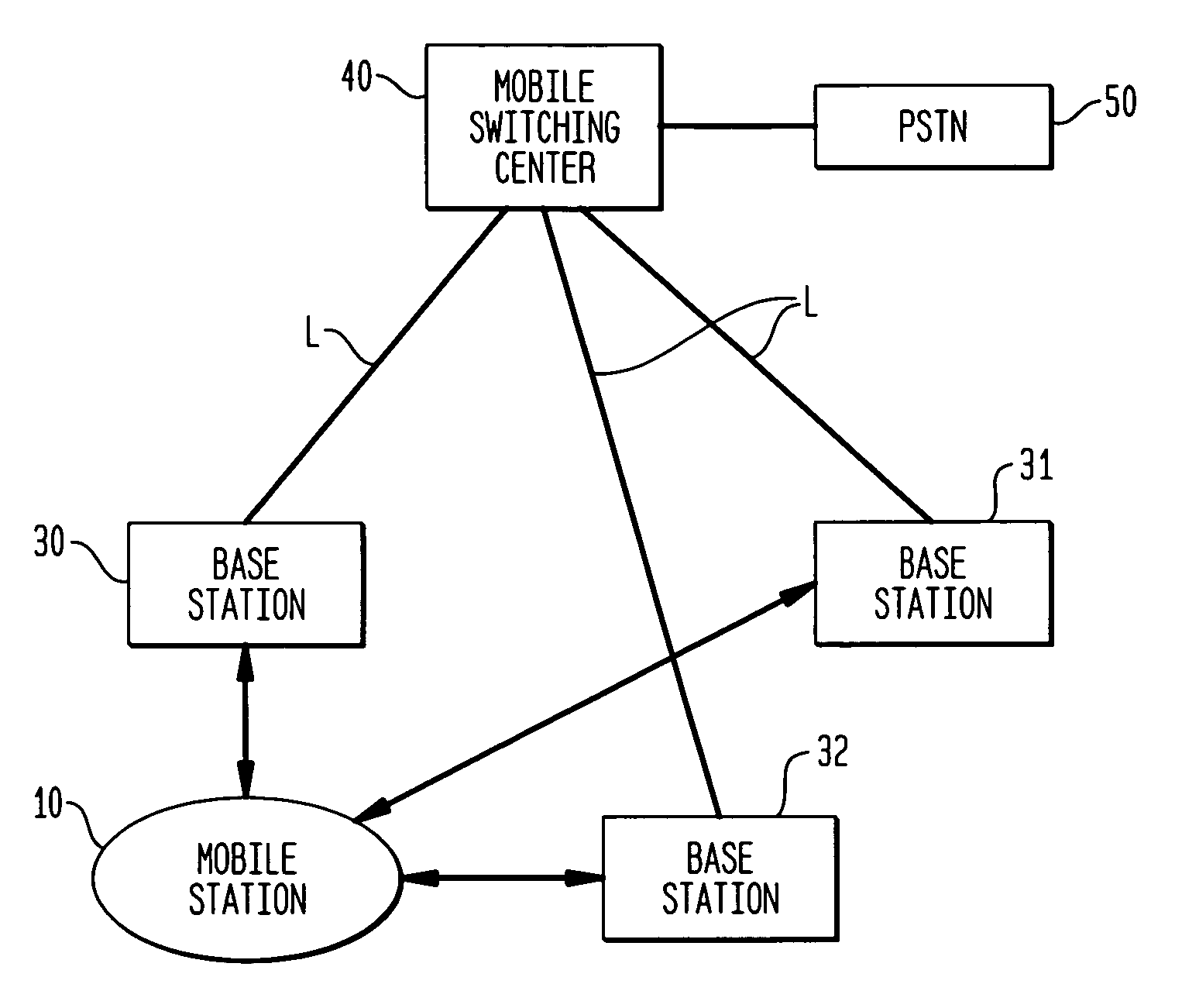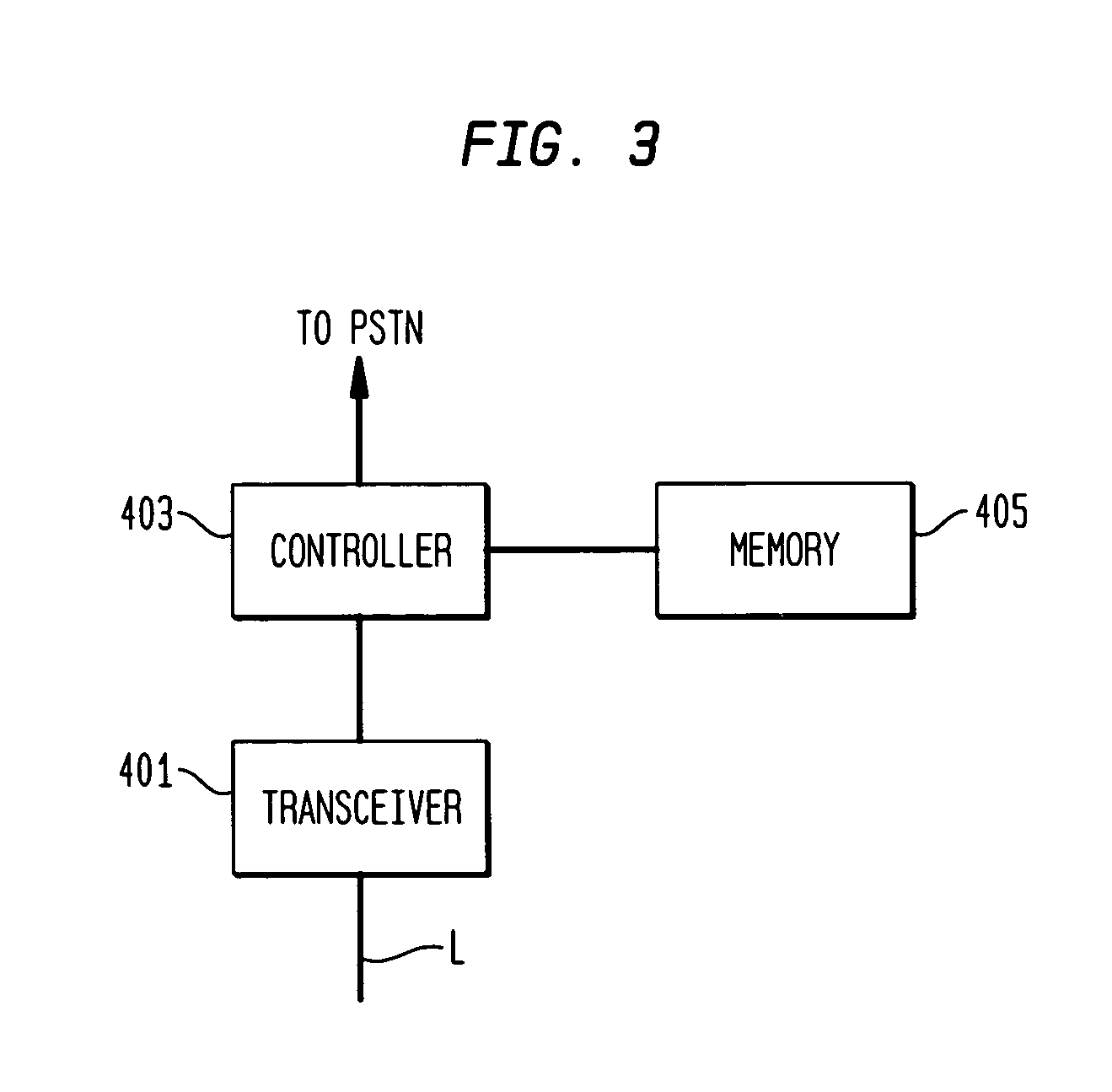CDMA power control for paging and initial traffic channel power
a power control and channel technology, applied in power management, substation equipment, wireless communication, etc., can solve the problems of inability to fundamentally resolve a base station acknowledgment failure, access probe handoff failure, and call origination failure, so as to achieve the effect of increasing the channel power
- Summary
- Abstract
- Description
- Claims
- Application Information
AI Technical Summary
Benefits of technology
Problems solved by technology
Method used
Image
Examples
Embodiment Construction
[0014]FIG. 1 illustrates a CDMA mobile communication system of a preferred embodiment of the present application. As illustrated in FIG. 1, the mobile communication system includes a plurality of base stations 30, 31 and 32 which transmit and receive communication signals to / from mobile station 10. Although not illustrated, each of base stations may cover respective sectors. Mobile switching center 40 is coupled to the plurality of base stations 30–32 via communication lines L and is further coupled to public switched telephone network (PSTN) 50 to enable communication between mobile station 10 and another party on PSTN 50. Although three respective base stations are illustrated, it is to be understood that the mobile communication system may include any number of base stations.
[0015]FIG. 2 illustrates base station 30 in greater detail. Transceiver 303 transmits and receives RF signals to / from mobile station 10 via antenna 301. Transceiver 303 and antenna 301 may be any conventional...
PUM
 Login to View More
Login to View More Abstract
Description
Claims
Application Information
 Login to View More
Login to View More - R&D
- Intellectual Property
- Life Sciences
- Materials
- Tech Scout
- Unparalleled Data Quality
- Higher Quality Content
- 60% Fewer Hallucinations
Browse by: Latest US Patents, China's latest patents, Technical Efficacy Thesaurus, Application Domain, Technology Topic, Popular Technical Reports.
© 2025 PatSnap. All rights reserved.Legal|Privacy policy|Modern Slavery Act Transparency Statement|Sitemap|About US| Contact US: help@patsnap.com



